Samik Sadhu
Self-supervised Learning with Speech Modulation Dropout
Mar 22, 2023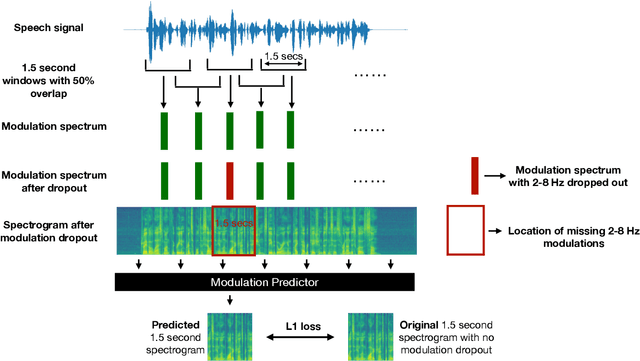

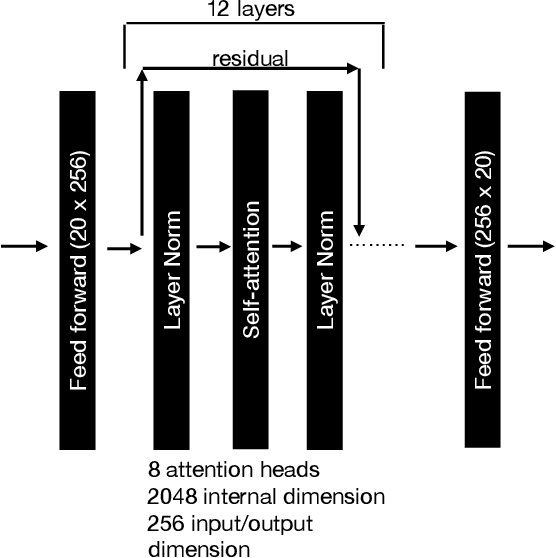
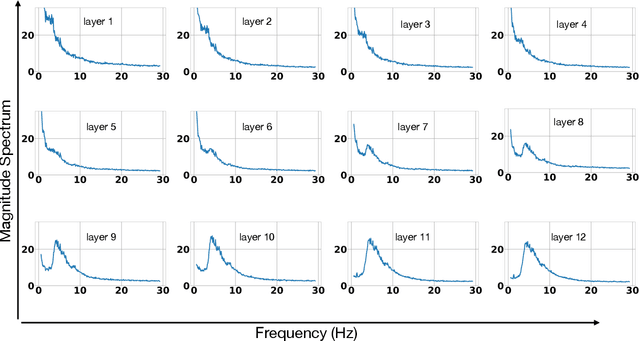
Abstract:We show that training a multi-headed self-attention-based deep network to predict deleted, information-dense 2-8 Hz speech modulations over a 1.5-second section of a speech utterance is an effective way to make machines learn to extract speech modulations using time-domain contextual information. Our work exhibits that, once trained on large volumes of unlabelled data, the outputs of the self-attention layers vary in time with a modulation peak at 4 Hz. These pre-trained layers can be used to initialize parts of an Automatic Speech Recognition system to reduce its reliance on labeled speech data greatly.
Stabilized training of joint energy-based models and their practical applications
Mar 07, 2023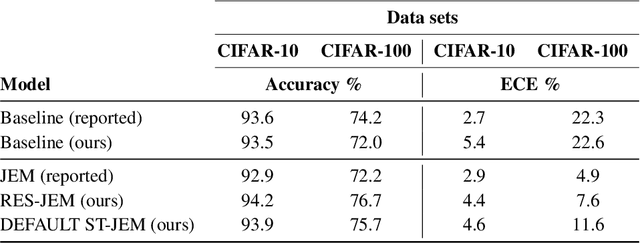
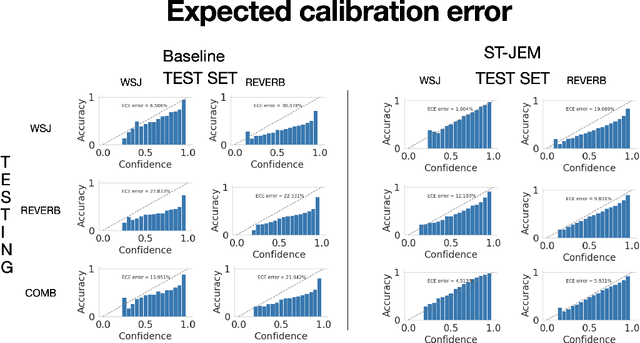
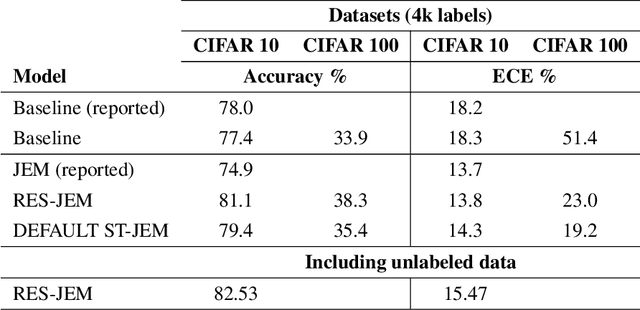
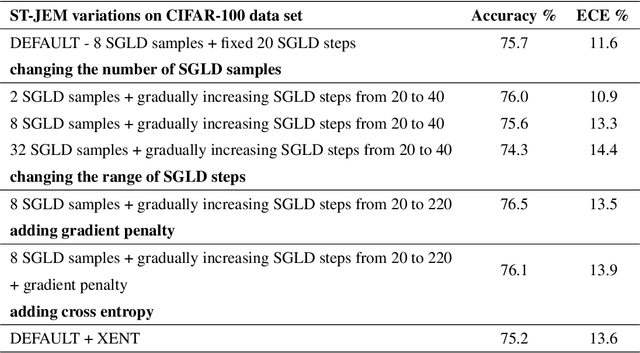
Abstract:The recently proposed Joint Energy-based Model (JEM) interprets discriminatively trained classifier $p(y|x)$ as an energy model, which is also trained as a generative model describing the distribution of the input observations $p(x)$. The JEM training relies on "positive examples" (i.e. examples from the training data set) as well as on "negative examples", which are samples from the modeled distribution $p(x)$ generated by means of Stochastic Gradient Langevin Dynamics (SGLD). Unfortunately, SGLD often fails to deliver negative samples of sufficient quality during the standard JEM training, which causes a very unbalanced contribution from the positive and negative examples when calculating gradients for JEM updates. As a consequence, the standard JEM training is quite unstable requiring careful tuning of hyper-parameters and frequent restarts when the training starts diverging. This makes it difficult to apply JEM to different neural network architectures, modalities, and tasks. In this work, we propose a training procedure that stabilizes SGLD-based JEM training (ST-JEM) by balancing the contribution from the positive and negative examples. We also propose to add an additional "regularization" term to the training objective -- MI between the input observations $x$ and output labels $y$ -- which encourages the JEM classifier to make more certain decisions about output labels. We demonstrate the effectiveness of our approach on the CIFAR10 and CIFAR100 tasks. We also consider the task of classifying phonemes in a speech signal, for which we were not able to train JEM without the proposed stabilization. We show that a convincing speech can be generated from the trained model. Alternatively, corrupted speech can be de-noised by bringing it closer to the modeled speech distribution using a few SGLD iterations. We also propose and discuss additional applications of the trained model.
Blind Signal Dereverberation for Machine Speech Recognition
Sep 30, 2022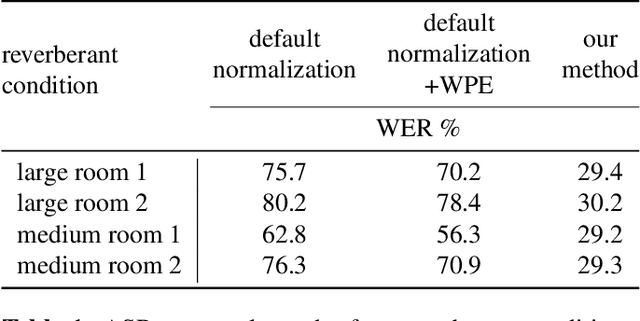
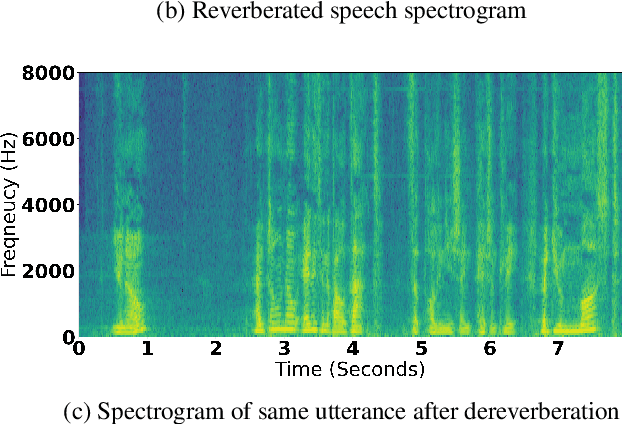
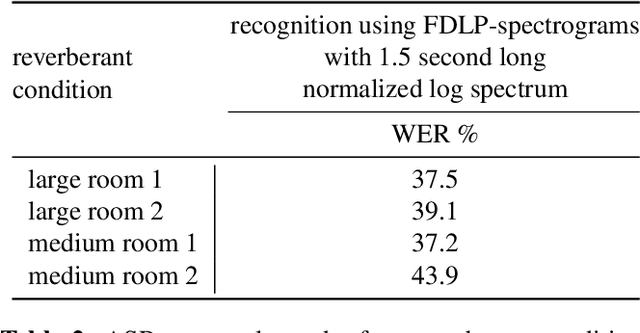
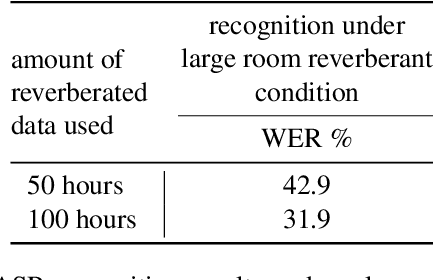
Abstract:We present a method to remove unknown convolutive noise introduced to speech by reverberations of recording environments, utilizing some amount of training speech data from the reverberant environment, and any available non-reverberant speech data. Using Fourier transform computed over long temporal windows, which ideally cover the entire room impulse response, we convert room induced convolution to additions in the log spectral domain. Next, we compute a spectral normalization vector from statistics gathered over reverberated as well as over clean speech in the log spectral domain. During operation, this normalization vectors are used to alleviate reverberations from complex speech spectra recorded under the same reverberant conditions . Such dereverberated complex speech spectra are used to compute complex FDLP-spectrograms for use in automatic speech recognition.
Importance of Different Temporal Modulations of Speech: A Tale of Two Perspectives
Mar 31, 2022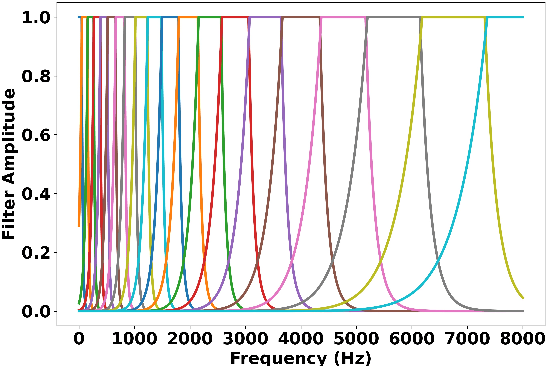
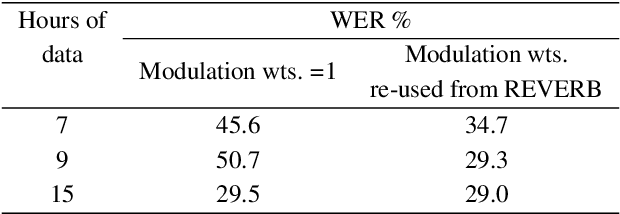
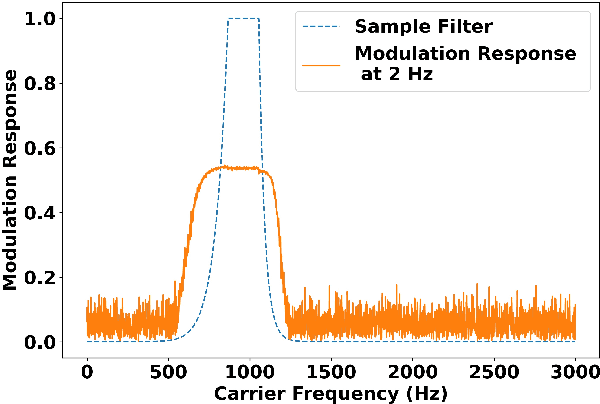
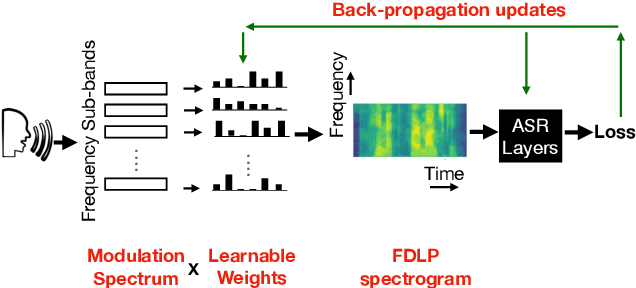
Abstract:How important are different temporal speech modulations for speech recognition? We answer this question from two complementary perspectives. Firstly, we quantify the amount of phonetic information in the modulation spectrum of speech by computing the mutual information between temporal modulations with frame-wise phoneme labels. Looking from another perspective, we ask - which speech modulations does an Automatic Speech Recognition (ASR) system prefer for its operation. Data-driven weights are learnt over the modulation spectrum and optimized for an end-to-end ASR task. Both methods unanimously agree that speech information is mostly contained in slow modulation. Maximum mutual information occurs around 3-6 Hz which also happens to be the range of modulations most preferred by the ASR. In addition, we show that incorporation of this knowledge into ASRs significantly reduces its dependency on the amount of training data.
Complex Frequency Domain Linear Prediction: A Tool to Compute Modulation Spectrum of Speech
Mar 31, 2022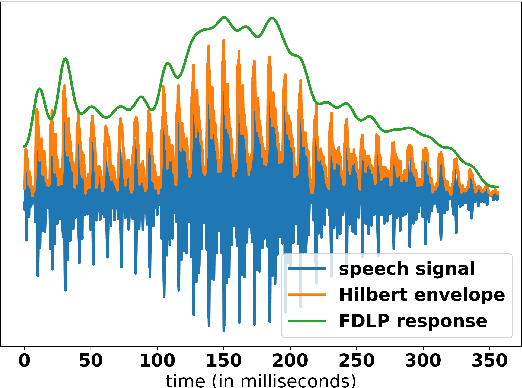

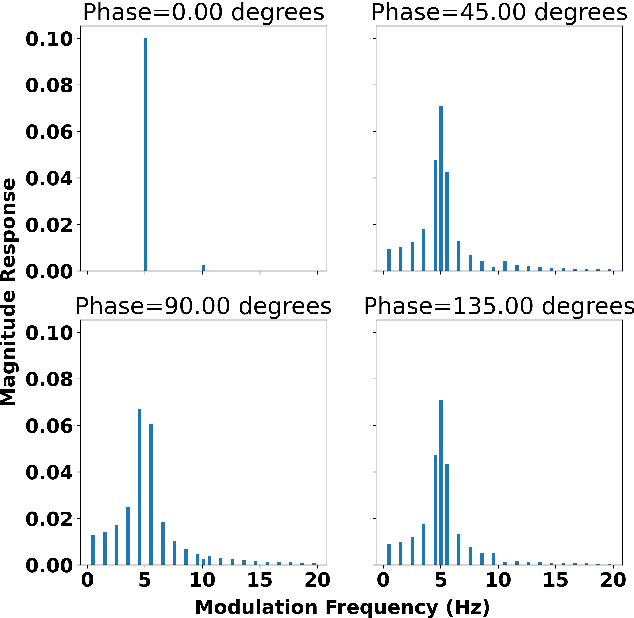
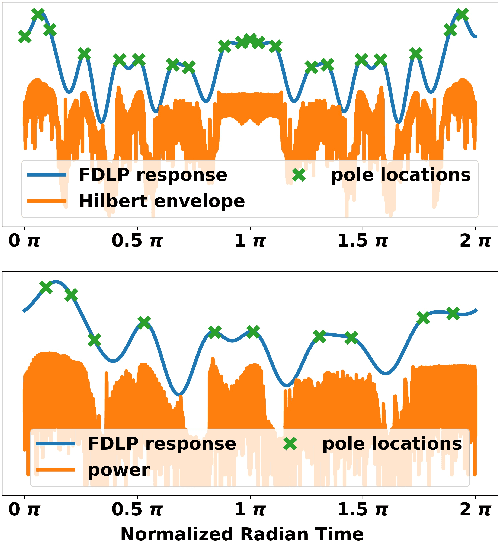
Abstract:Conventional Frequency Domain Linear Prediction (FDLP) technique models the squared Hilbert envelope of speech with varied degrees of approximation which can be sampled at the required frame rate and used as features for Automatic Speech Recognition (ASR). Although previously the complex cepstrum of the conventional FDLP model has been used as compact frame-wise speech features, it has lacked interpretability in the context of the Hilbert envelope. In this paper, we propose a modification of the conventional FDLP model that allows easy interpretability of the complex cepstrum as temporal modulations in an all-pole model approximation of the power of the speech signal. Additionally, our "complex" FDLP yields significant speed-ups in comparison to conventional FDLP for the same degree of approximation.
Radically Old Way of Computing Spectra: Applications in End-to-End ASR
Apr 02, 2021
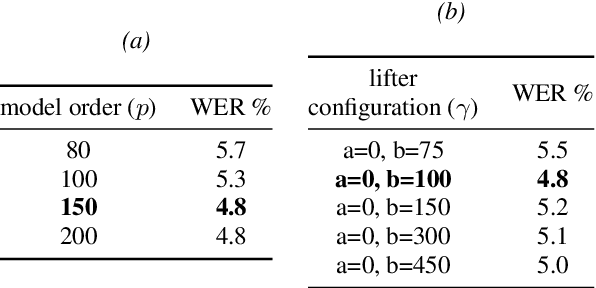
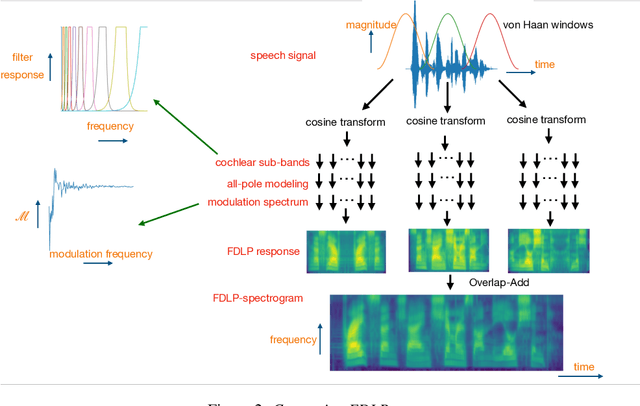
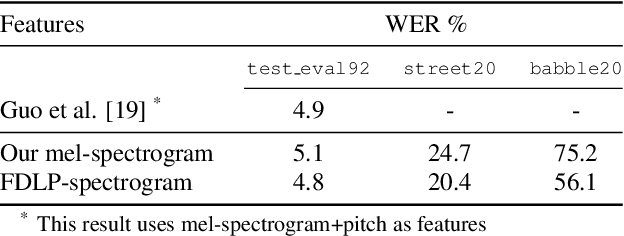
Abstract:We propose a technique to compute spectrograms using Frequency Domain Linear Prediction (FDLP) that uses all-pole models to fit the squared Hilbert envelope of speech in different frequency sub-bands. The spectrogram of a complete speech utterance is computed by overlap-add of contiguous all-pole model responses. A long context window of 1.5 seconds allows us to capture the low frequency temporal modulations of speech in the spectrogram. For an end-to-end automatic speech recognition task, the FDLP spectrogram performs on par with the standard mel spectrogram features for clean read speech training and test data. For more realistic speech data with train-test domain mismatches or reverberations, FDLP spectrogram shows up to 25% and 22% relative WER improvements over mel spectrogram respectively.
Wav2vec-C: A Self-supervised Model for Speech Representation Learning
Mar 09, 2021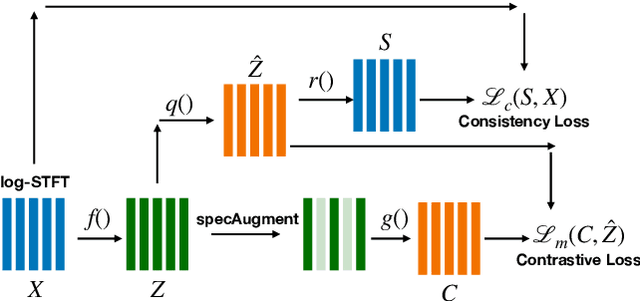

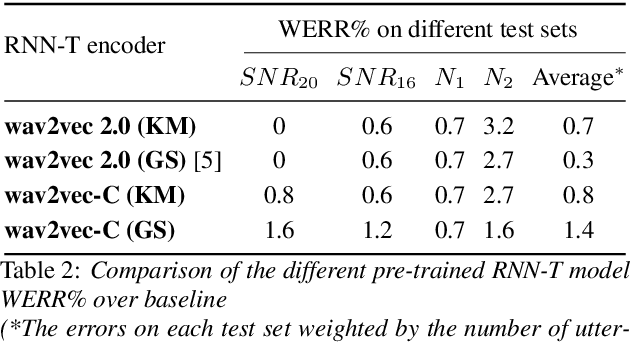
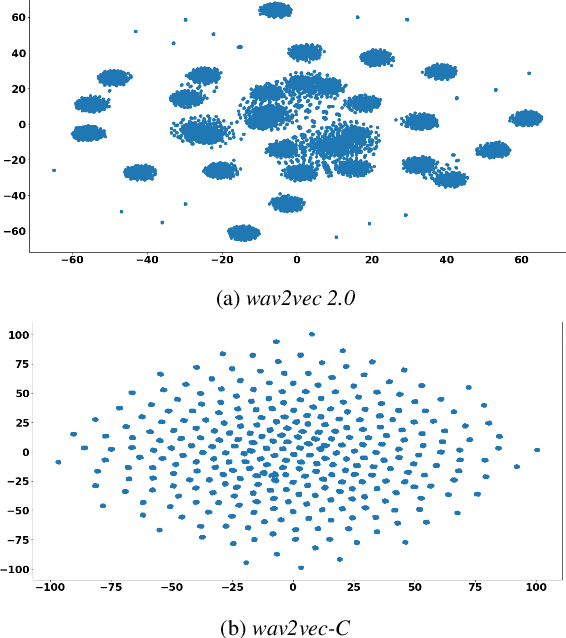
Abstract:Wav2vec-C introduces a novel representation learning technique combining elements from wav2vec 2.0 and VQ-VAE. Our model learns to reproduce quantized representations from partially masked speech encoding using a contrastive loss in a way similar to Wav2vec 2.0. However, the quantization process is regularized by an additional consistency network that learns to reconstruct the input features to the wav2vec 2.0 network from the quantized representations in a way similar to a VQ-VAE model. The proposed self-supervised model is trained on 10k hours of unlabeled data and subsequently used as the speech encoder in a RNN-T ASR model and fine-tuned with 1k hours of labeled data. This work is one of only a few studies of self-supervised learning on speech tasks with a large volume of real far-field labeled data. The Wav2vec-C encoded representations achieves, on average, twice the error reduction over baseline and a higher codebook utilization in comparison to wav2vec 2.0
Exploring Methods for the Automatic Detection of Errors in Manual Transcription
Apr 08, 2019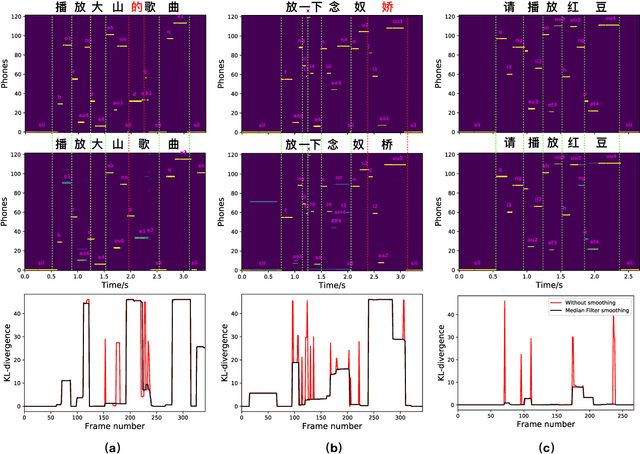

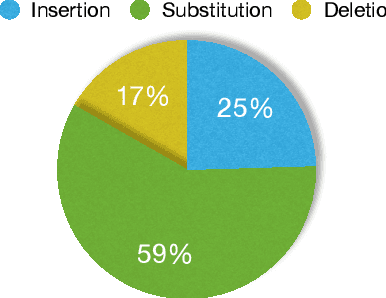

Abstract:Quality of data plays an important role in most deep learning tasks. In the speech community, transcription of speech recording is indispensable. Since the transcription is usually generated artificially, automatically finding errors in manual transcriptions not only saves time and labors but benefits the performance of tasks that need the training process. Inspired by the success of hybrid automatic speech recognition using both language model and acoustic model, two approaches of automatic error detection in the transcriptions have been explored in this work. Previous study using a biased language model approach, relying on a strong transcription-dependent language model, has been reviewed. In this work, we propose a novel acoustic model based approach, focusing on the phonetic sequence of speech. Both methods have been evaluated on a completely real dataset, which was originally transcribed with errors and strictly corrected manually afterwards.
 Add to Chrome
Add to Chrome Add to Firefox
Add to Firefox Add to Edge
Add to Edge